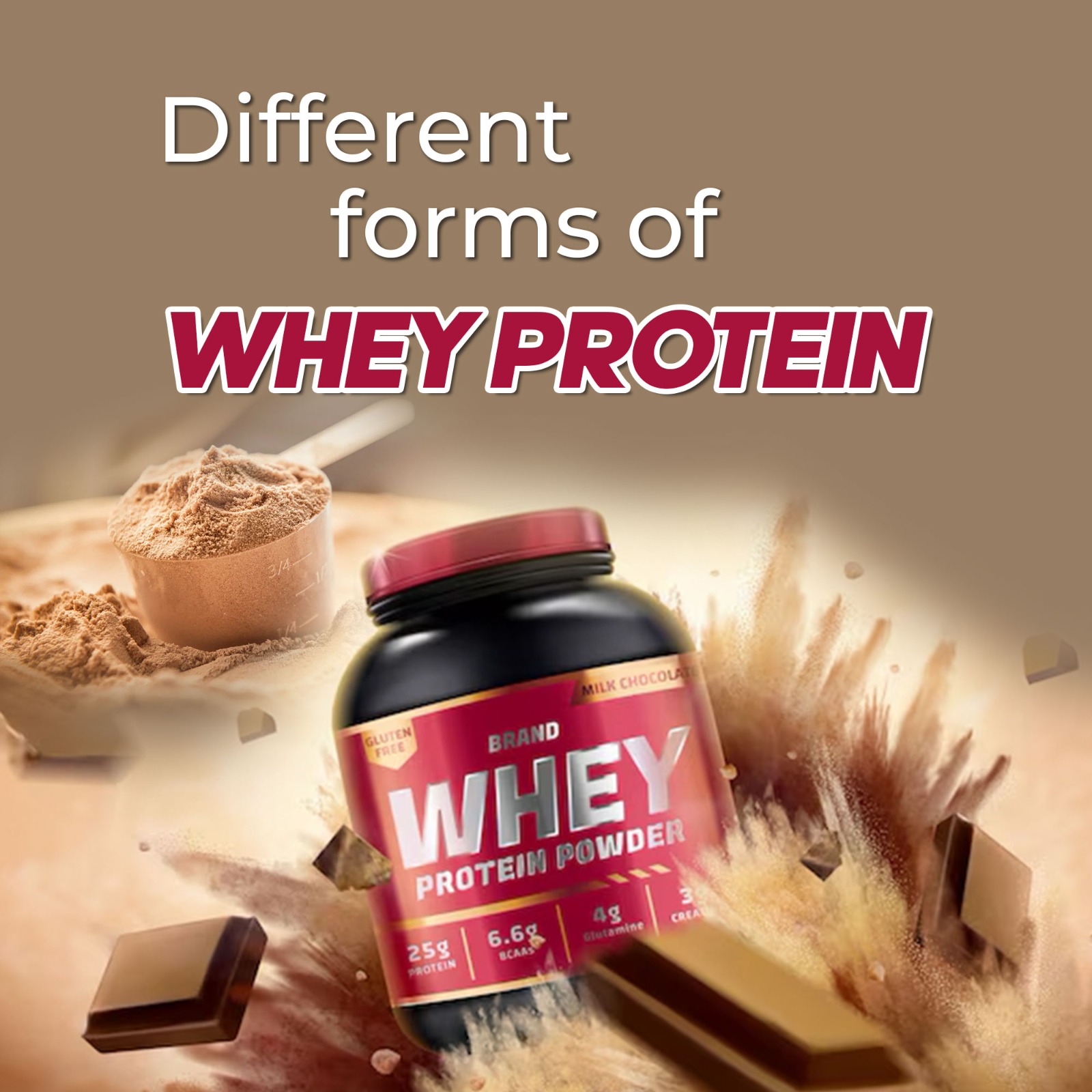Whey protein, a popular supplement derived from milk during the cheese-making process, is highly valued for its rich amino acid profile and rapid digestibility. It’s available in three main forms: whey protein concentrate (WPC), whey protein isolate (WPI), and whey protein hydrolysate (WPH). Each form has distinct properties and uses, making them suitable for different health and fitness goals.
Whey Protein Concentrate (WPC)
Best for: General health, muscle building, and weight gain.
Description and Benefits:
Whey protein concentrate is the least processed form of whey protein, containing around 70-80% protein by weight. The remaining percentage is made up of fats, lactose, and minerals, which retain some of the natural nutritional components found in milk.
Uses:
Muscle Growth: WPC is rich in branched-chain amino acids (BCAAs), particularly leucine, which plays a crucial role in muscle protein synthesis.
Overall Nutrition: It contains more bioactive compounds compared to other forms, supporting overall health and immunity.
Cost-Effective: Being less processed, WPC is typically cheaper, making it a popular choice for those seeking an economical protein supplement.
Whey Protein Isolate (WPI)
Best for: Weight loss, lactose intolerance, and lean muscle maintenance.
Description and Benefits:
Whey protein isolate undergoes additional processing to remove most of the fat and lactose, resulting in a protein content of 90% or higher. This makes it a purer form of whey protein, with minimal carbohydrates and fats.
Uses:
Weight Management: The high protein content and low fat/carbohydrate ratio make WPI ideal for those looking to lose weight or maintain lean muscle mass without added calories.
Lactose Intolerance: With most lactose removed, WPI is suitable for individuals with lactose intolerance who want to avoid digestive discomfort.
Lean Muscle Maintenance: Athletes and bodybuilders often use WPI during cutting phases to preserve muscle mass while reducing body fat.
Whey Protein Hydrolysate (WPH)
Best for: Rapid digestion, minimizing allergies, and post-workout recovery.
Description and Benefits:
Whey protein hydrolysate is pre-digested, meaning the protein chains are broken down into smaller peptides, which makes it the fastest-digesting form of whey protein. This process often makes WPH more expensive than WPC and WPI.
Uses:
Post-Workout Recovery: Due to its rapid absorption, WPH is ideal for post-exercise recovery, providing amino acids to muscles quickly to repair and grow.
Reduced Allergens: The hydrolysis process can reduce potential allergens, making it a good option for those with sensitive digestive systems.
Infant and Medical Nutrition: WPH is often used in specialized medical and infant formulas because of its ease of digestion and hypoallergenic properties.
Conclusion
Choosing the best form of whey protein depends on individual goals and needs:
WPC is best for those seeking a cost-effective, nutritious protein source for muscle growth and general health.
WPI suits those focusing on weight loss, managing lactose intolerance, or maintaining lean muscle mass with minimal extra calories.
WPH is ideal for quick post-workout recovery, individuals with sensitive digestion, or those requiring rapid nutrient absorption.
Understanding the specific benefits and applications of each type can help individuals tailor their protein supplementation to align with their dietary goals, lifestyle, and physiological needs.


